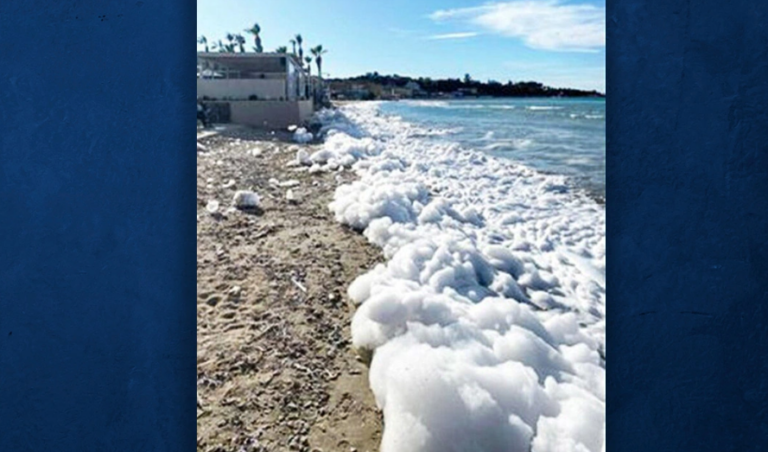The appearance of foam on Tsilivi Beach in recent days caused concern among many residents of Zakynthos.
Due to the numerous pollution incidents observed on the island initially, everyone’s thought was dismal. However, as reported by “IMERAZANTE,” professors from the Ionian University explained that this phenomenon is known as sea foam (related to the growth of phytoplankton in the marine environment and the production of organic material by marine plants, such as algae).
A professor from the Department of Environmental Studies, Anastasios Kalimeris, and marine biologist and Assistant Professor of the Department of Environmental Studies, Vasilis Gerovasileiou, conducted an on-site inspection after being informed by “IMERAZANTE” about the phenomenon.
Mr. Kalimeris stated, “Regarding the appearance of foam layers on Tsilivi Beach on Wednesday and thereafter, we conducted an on-site inspection following the notification. According to all indications, this is a phenomenon known as sea foam. Sea foam is often the visual result in beaches of processes based on the production of organic material either from phytoplankton or from “Poseidonia,” bottom seaweed for example. In spring, phytoplankton growth begins in the marine environment, as well as the production of organic material from marine plants, such as algae. When this material is released in large quantities, with the agitation developed near the beach, many times, it leads to the formation of a thick layer of white foam that resembles soap, but it is not! It is sea foam of organic or biological origin. Usually, this foam is short-lived; after a few hours, it disappears unless the phenomenon recurs the next day, in which case it may persist.”
Kyparissi, Laconia: Exploring the gastronomic wealth of a fairytale village
He added that scientists also saw satellite photos showing increased phytoplankton production in the Ionian Sea, which may explain these foams.
“Supporting this view is the fact that, as we see with Sentinel satellite photos from the previous days, especially in the last week of March, there was a common, for the season, increased phytoplankton production in our beaches, especially in western Lefkada, almost all of Kefalonia, as well as in Zakynthos and the bay of Laganas and the western and eastern coasts. This makes us believe that it has nothing to do with any pollution load from a ship with chemicals, oil, or anything similar. These are the indications. There is a smaller chance that this foam comes from a non-petroleum pollution incident, that is, from a passing ship that left waste, but even the color does not correspond to such a possibility. Everything suggests that it is sea foam of biological origin and not a pollution load that would smell, have a different color, and we would probably find traces,” Mr. Kalimeris concluded.
Ask me anything
Explore related questions





